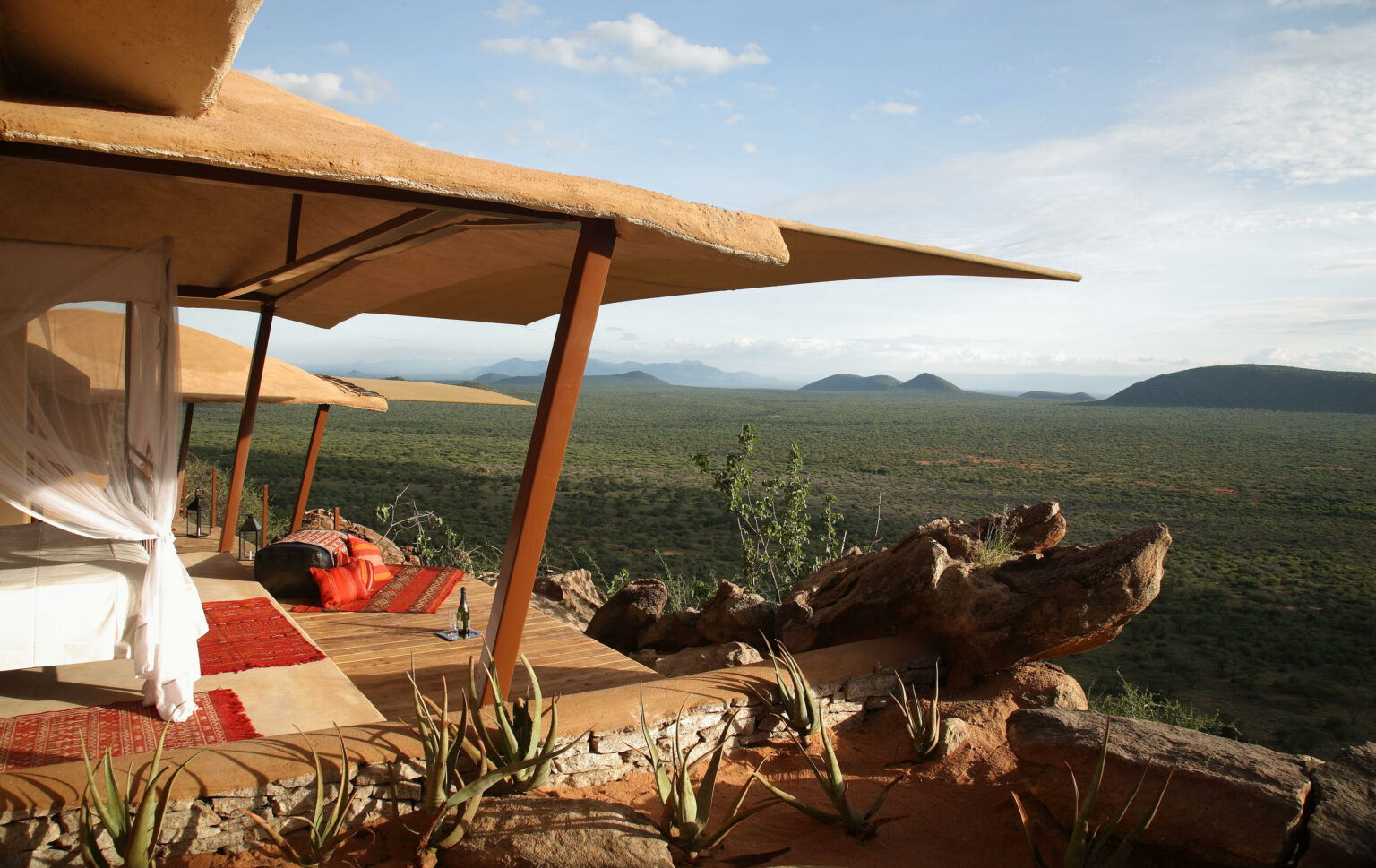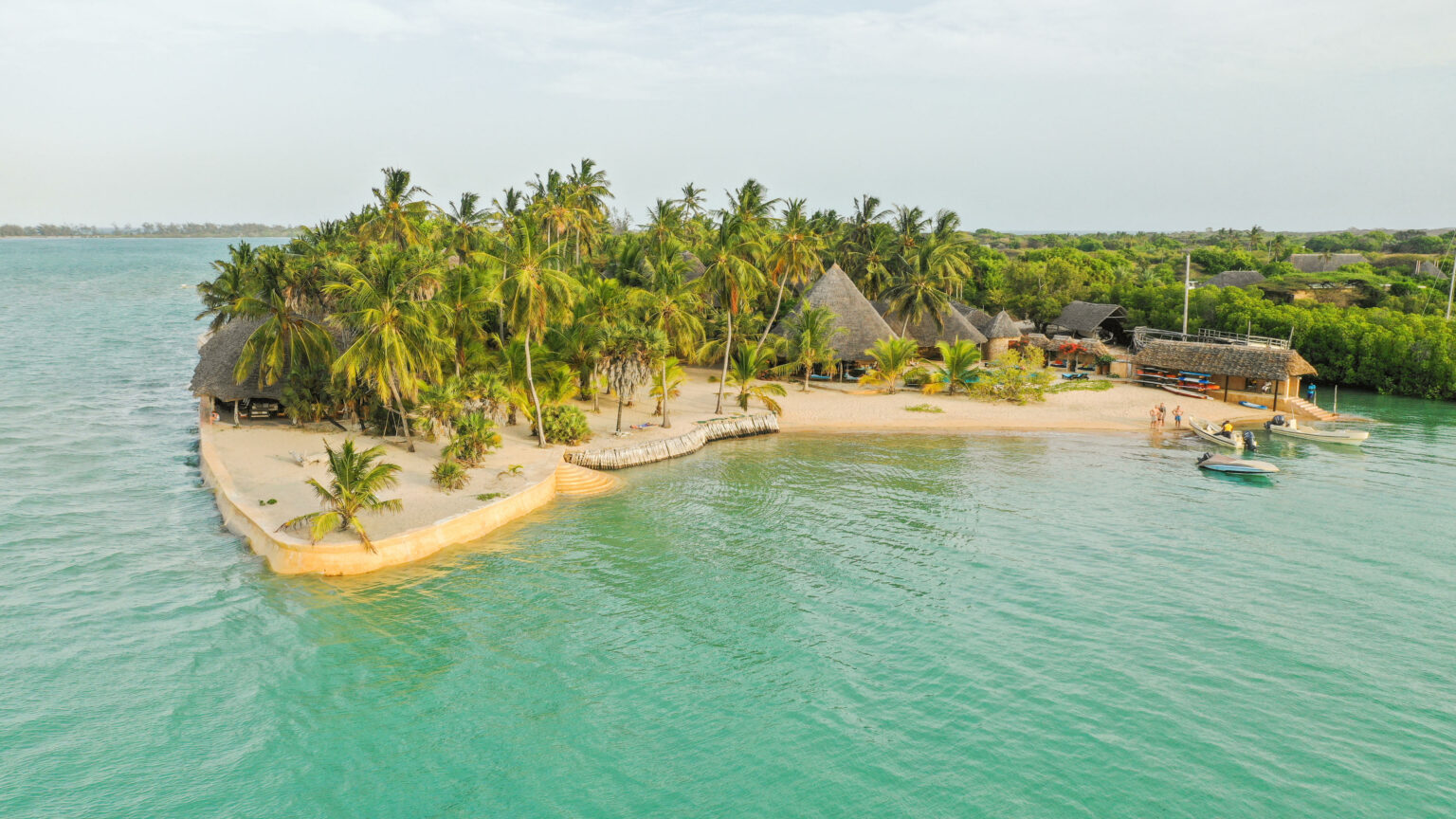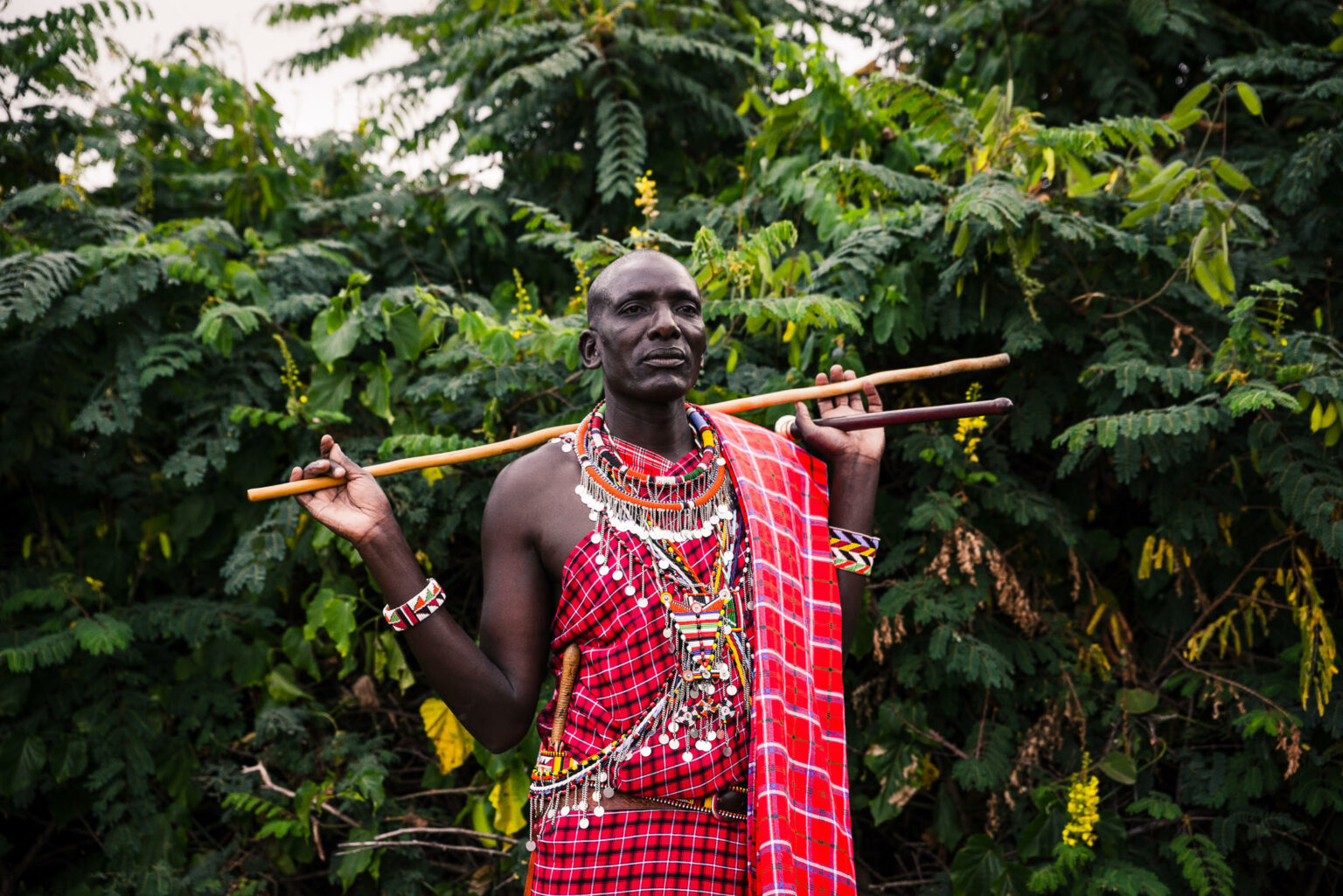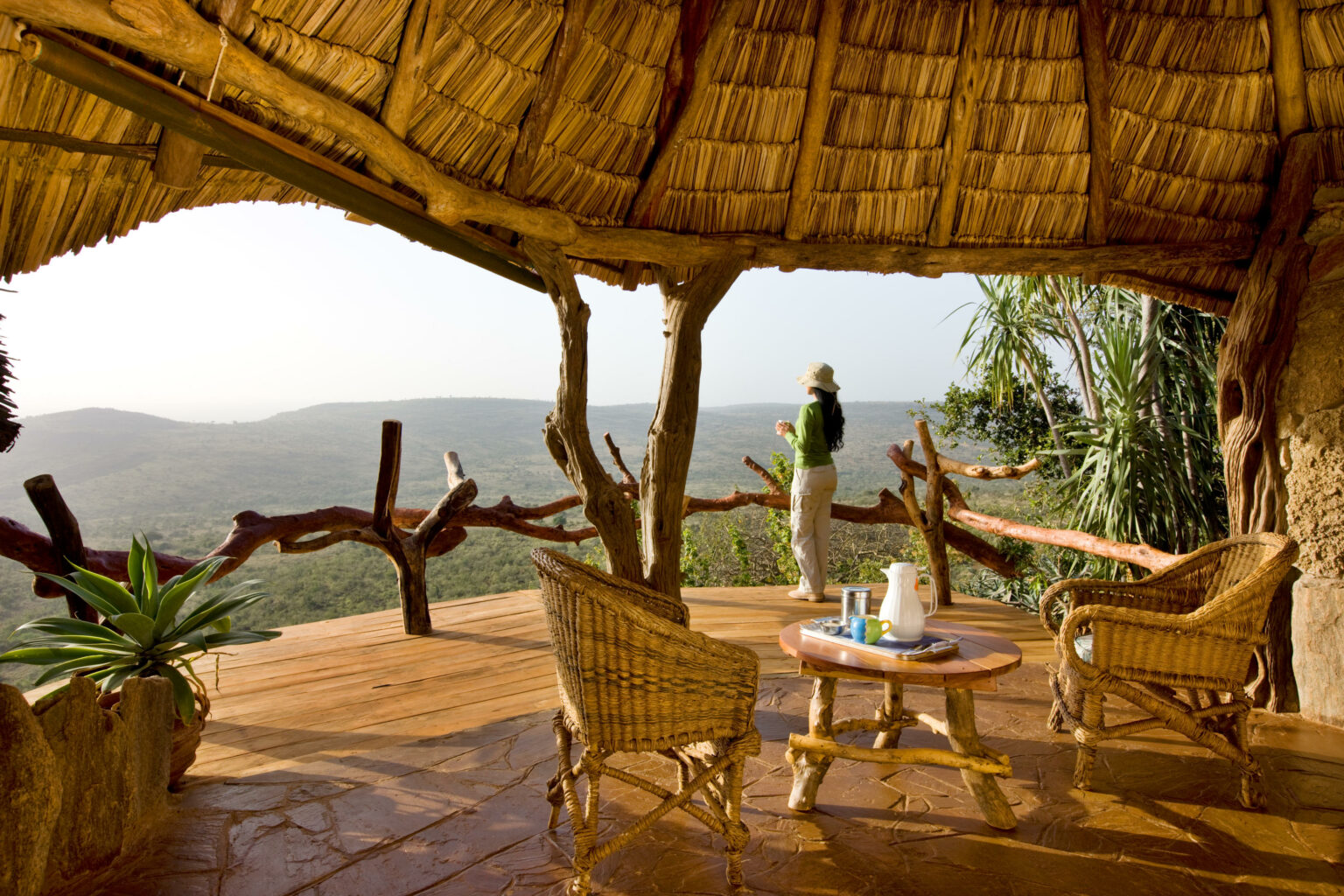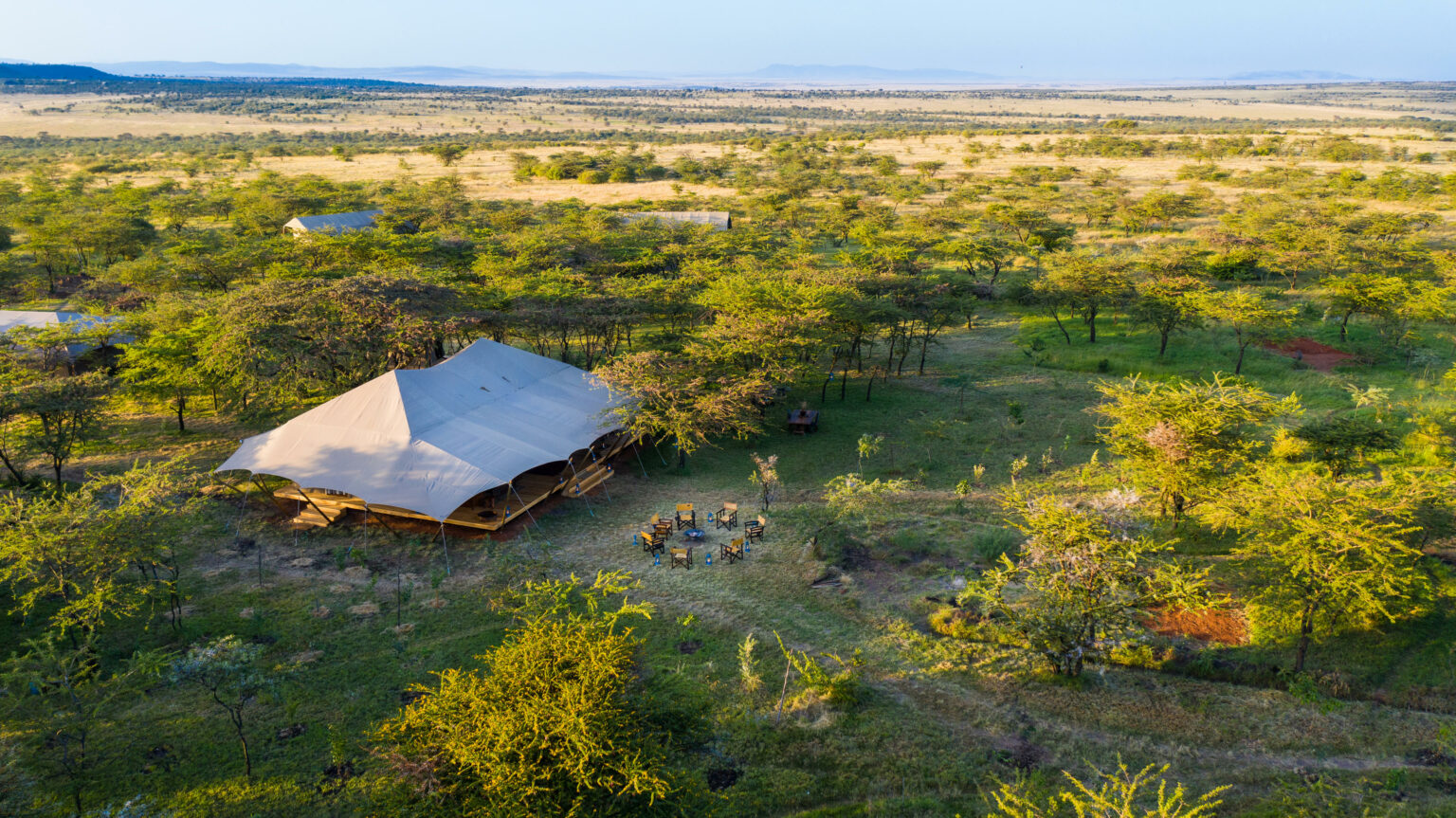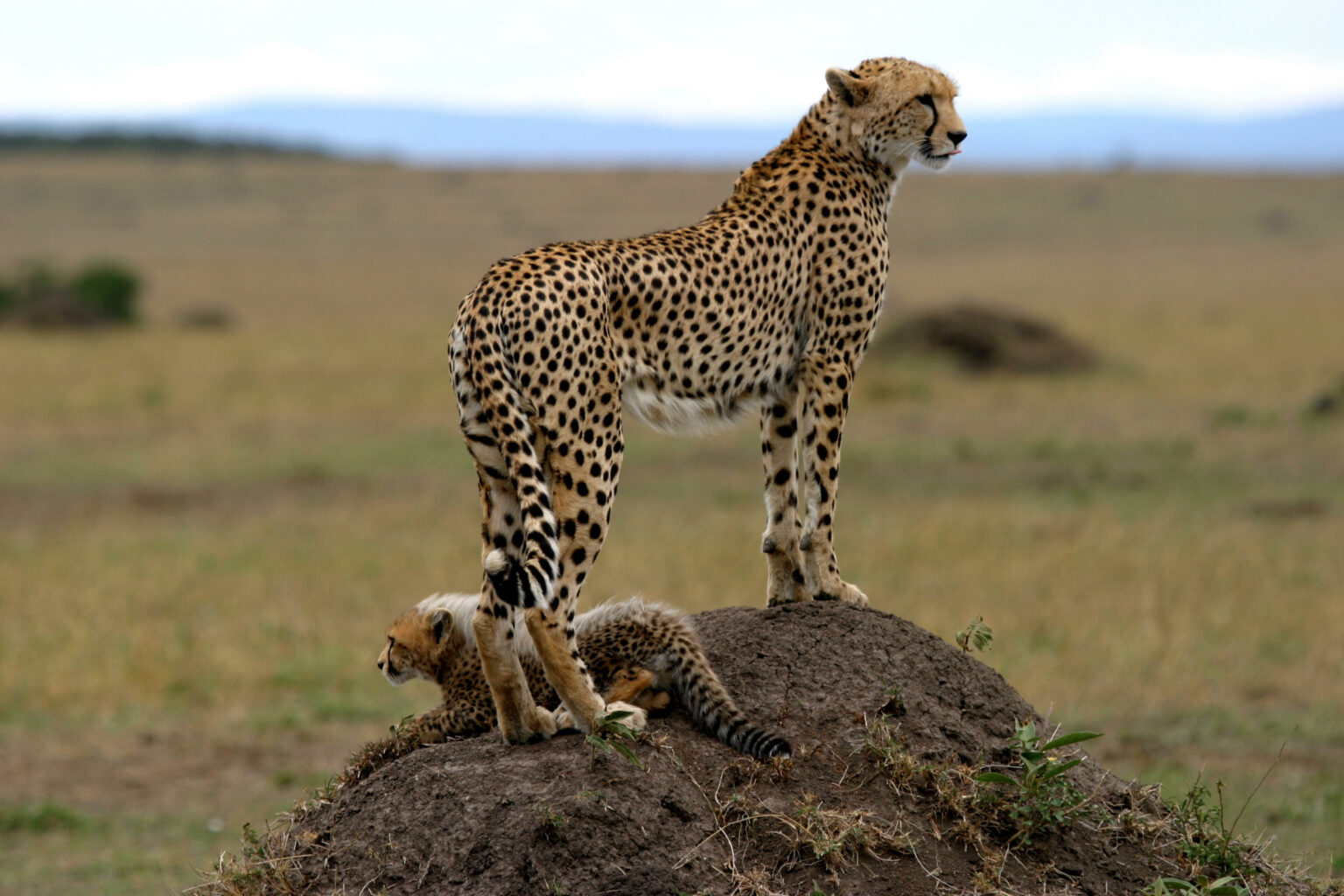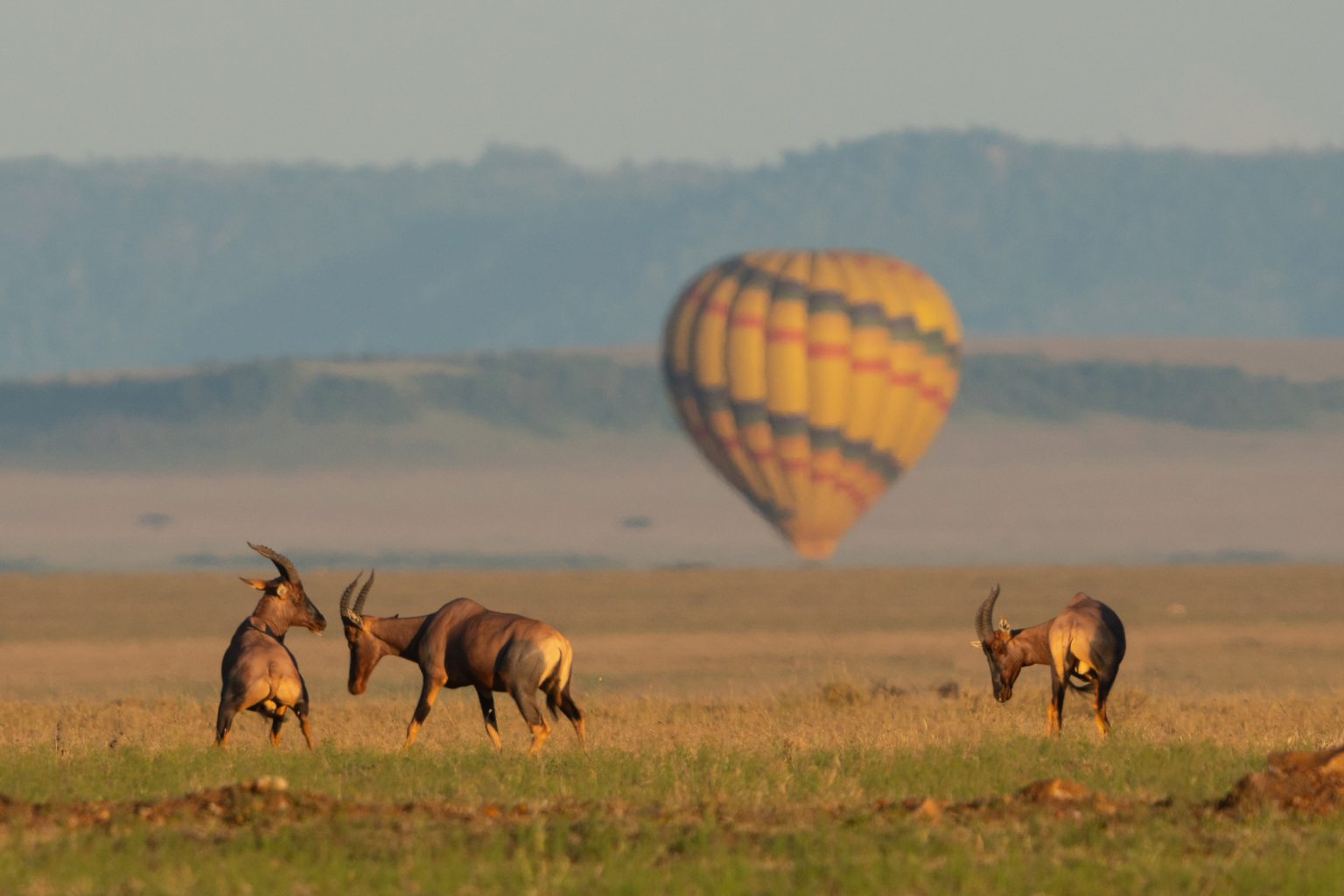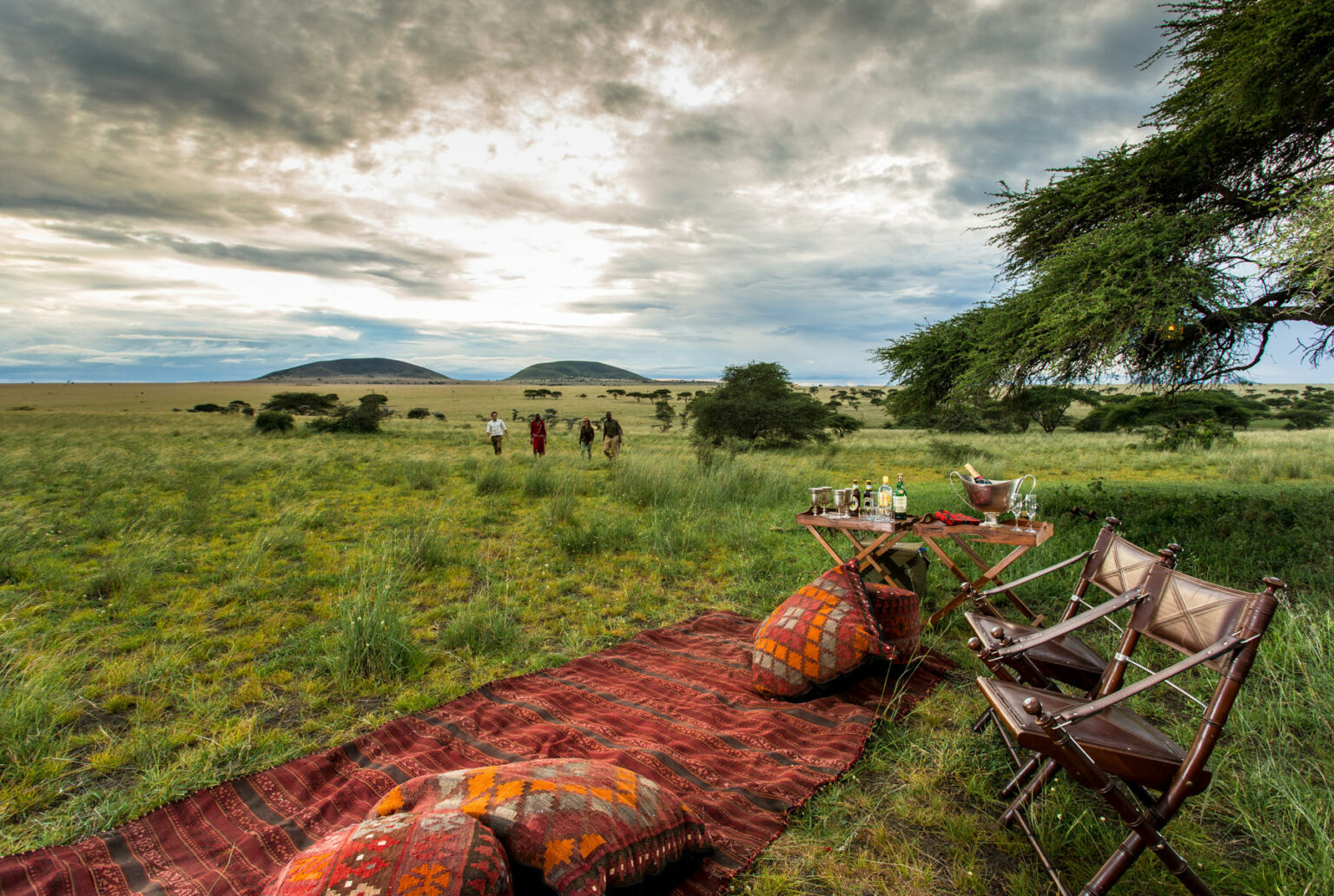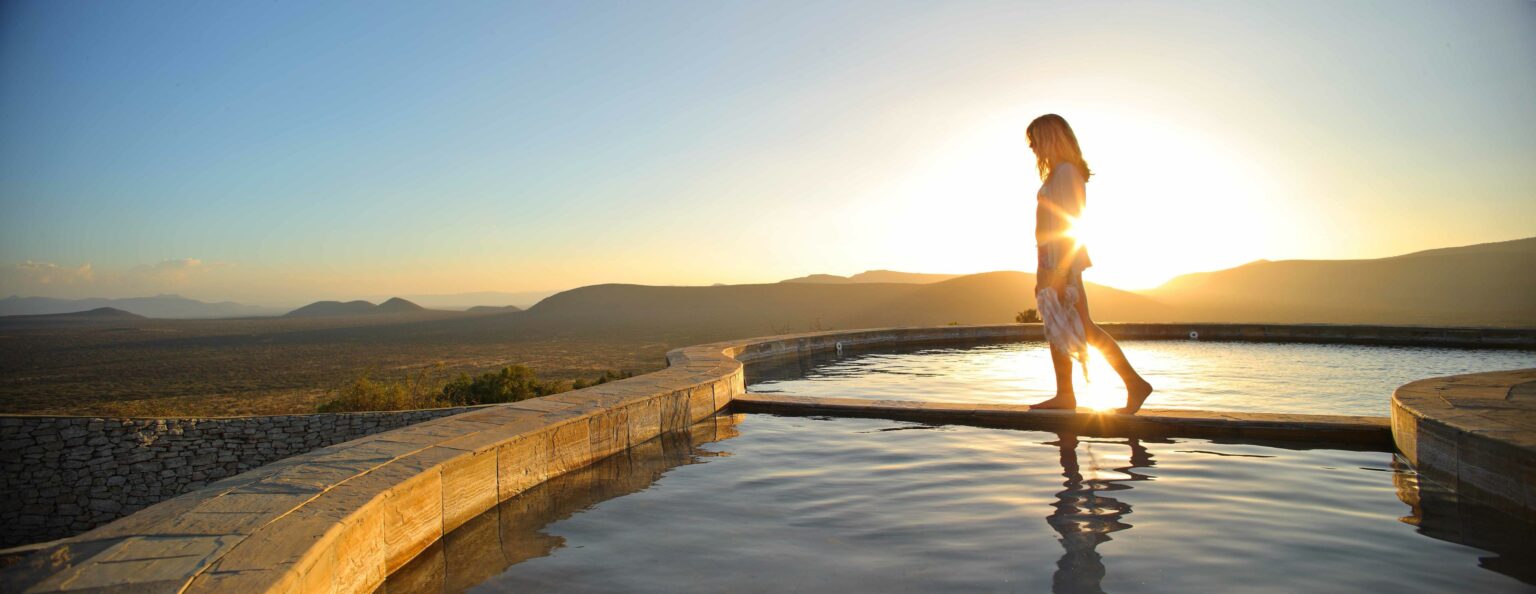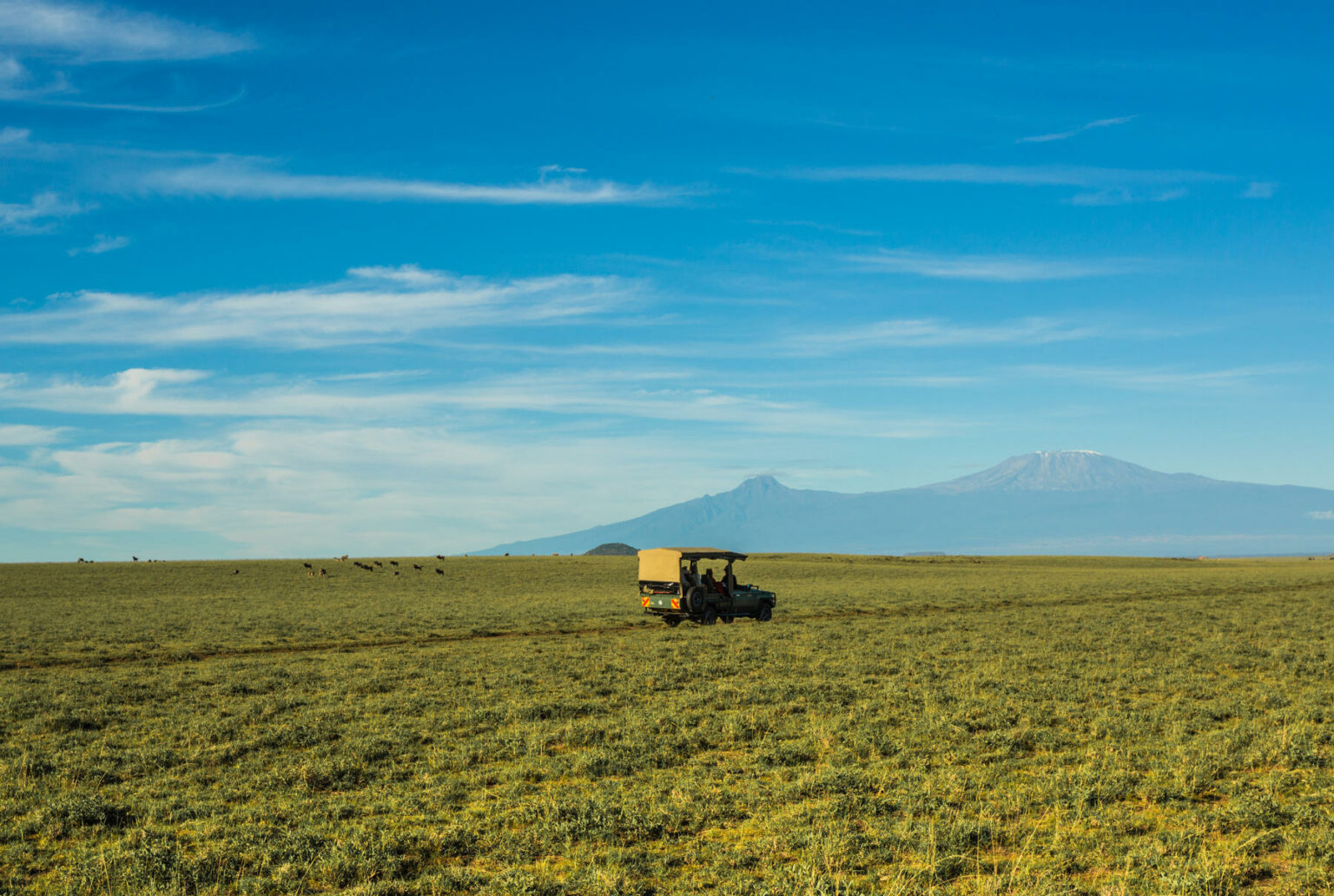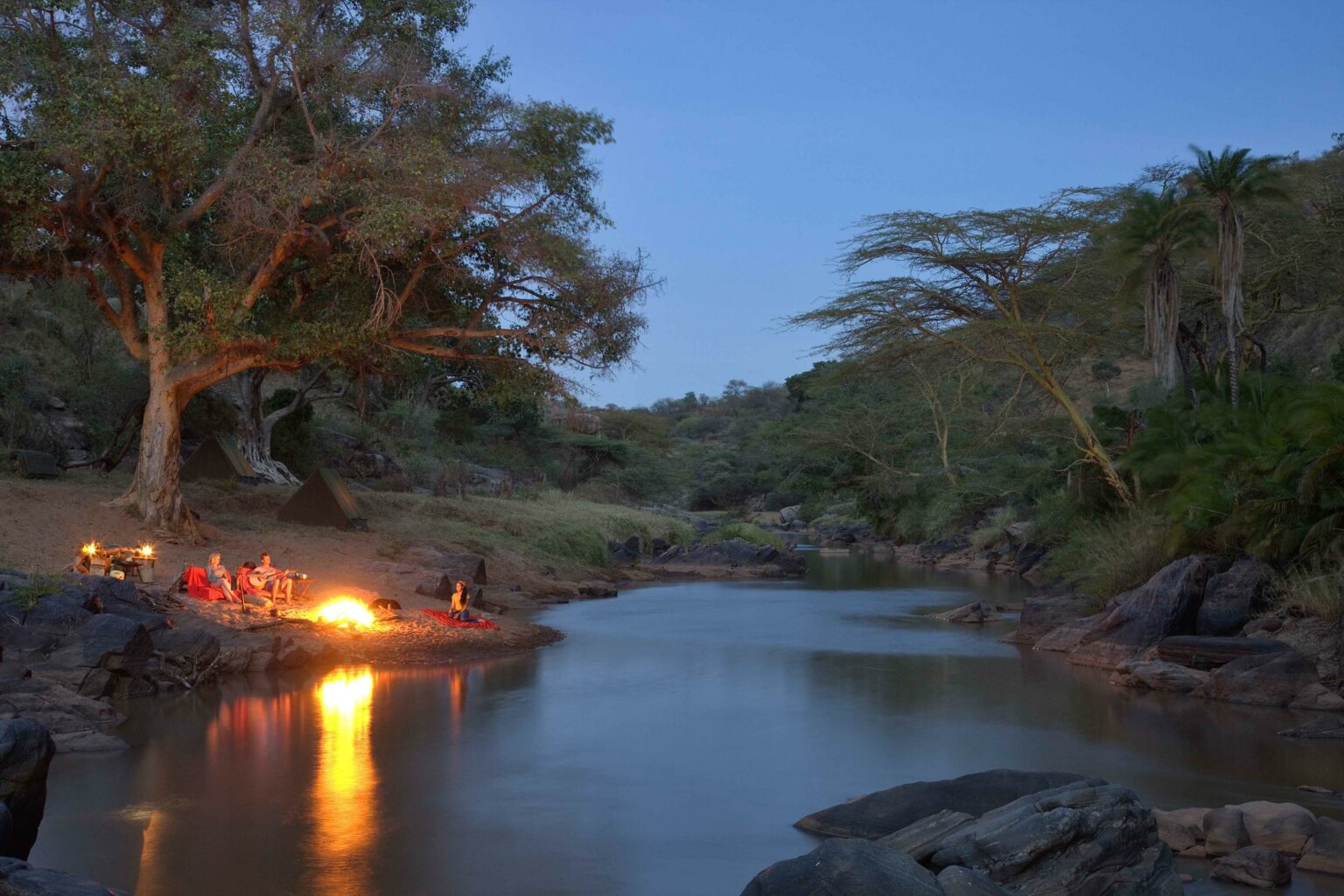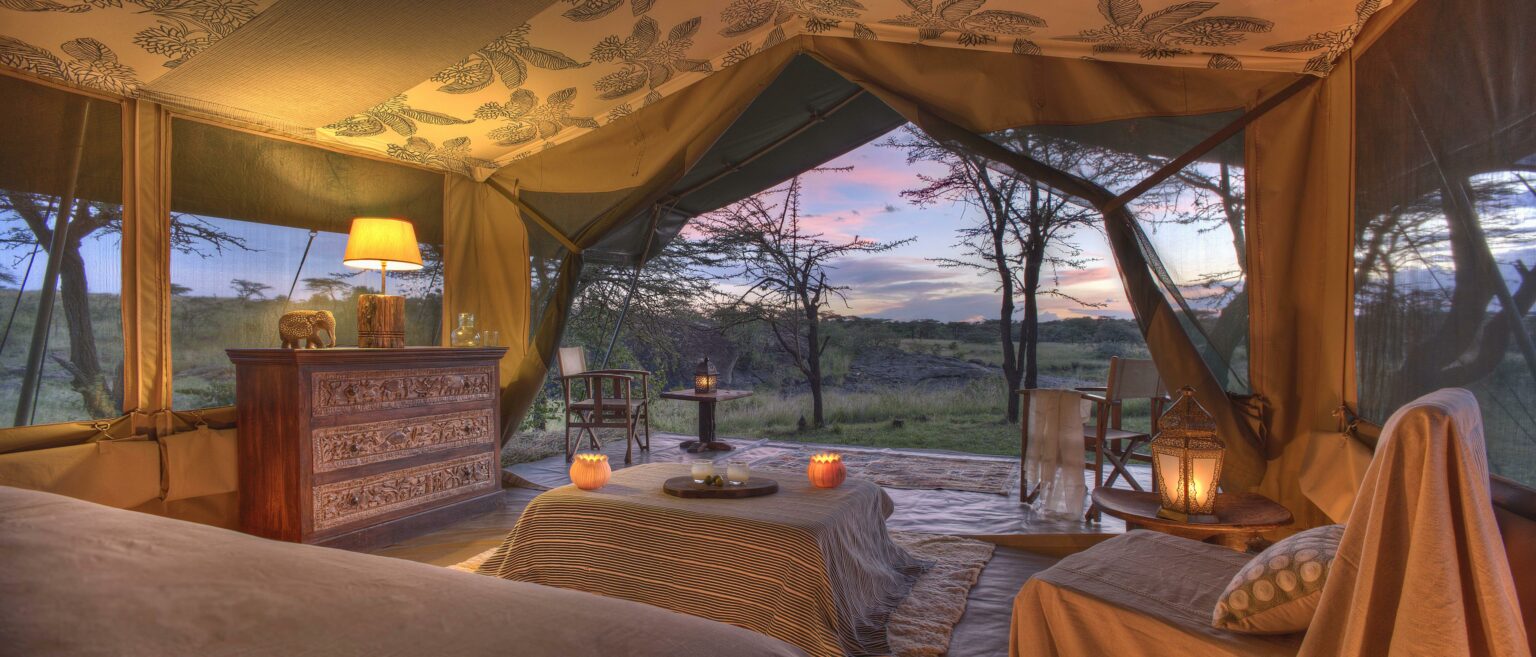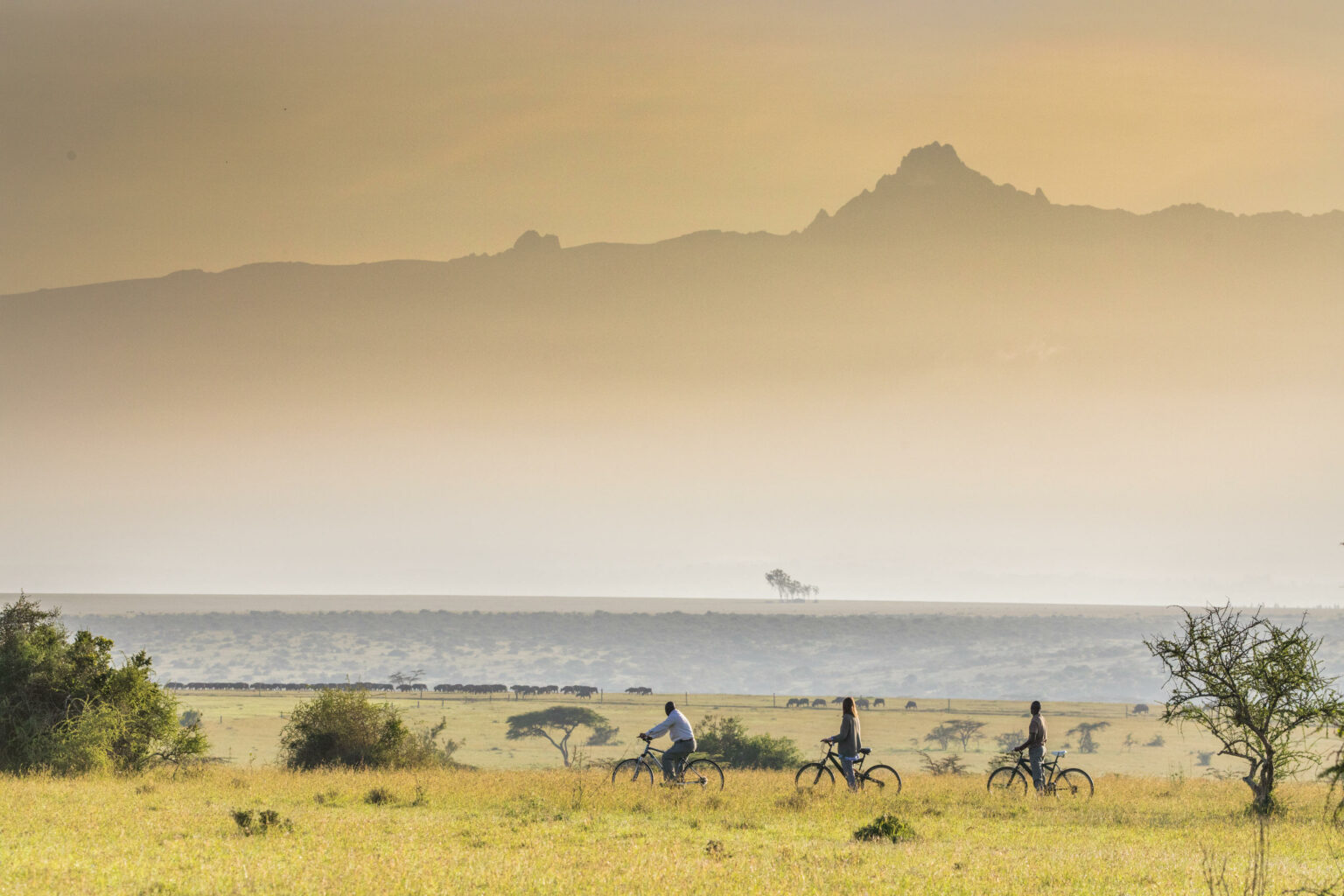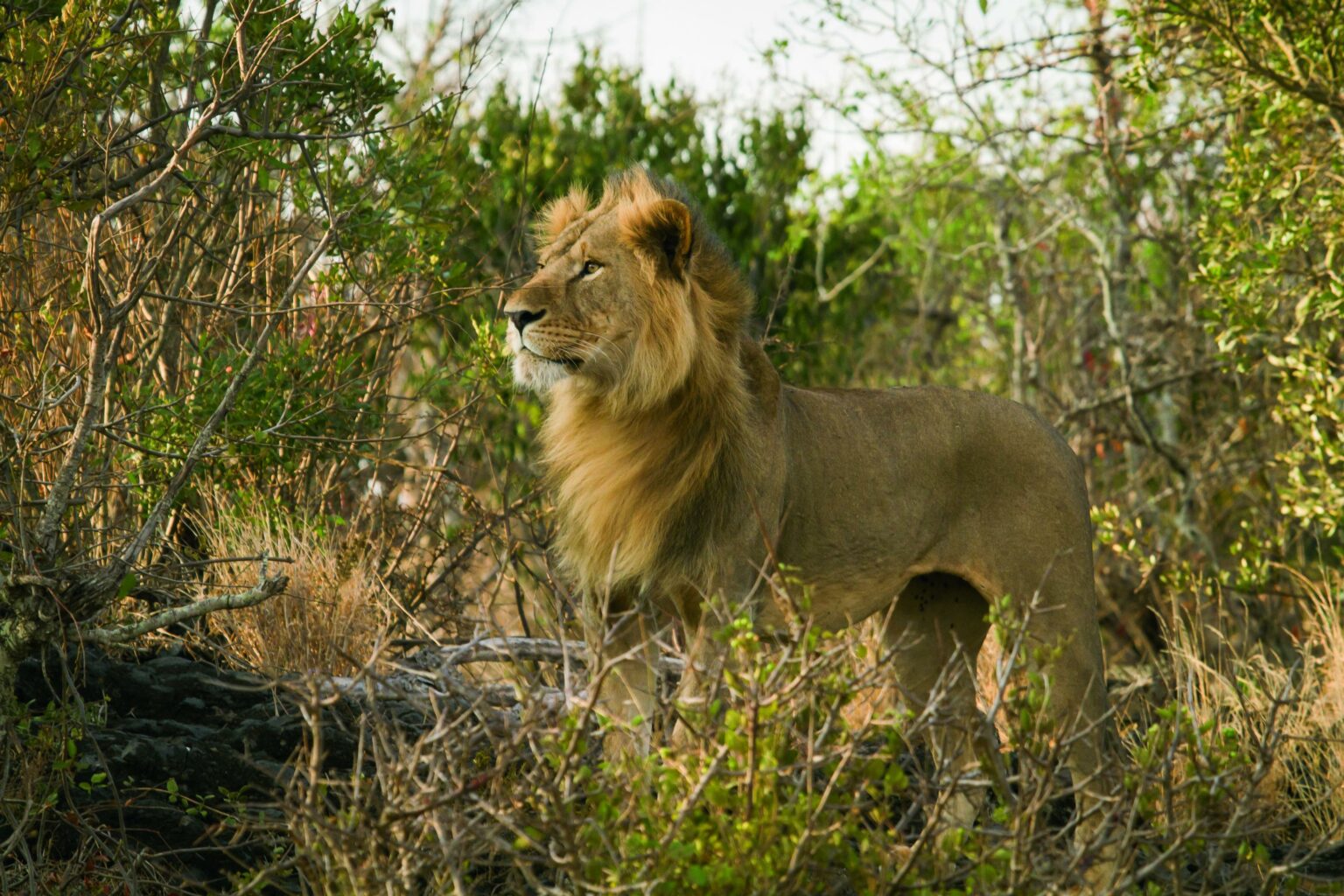Luxury & Private Kenya Safaris
When the mind’s eye dreams of an African safari, chances are, it’s a portrait of Kenya. It’s where the modern safari was born and to this day, remains the ultimate destination for wildlife viewing.
From tropical forests that hug the Indian Ocean and open savannah to arid shrubland and Rift Valley lakes, Kenya’s appeal is as diverse as its kaleidoscope of landscapes. Layered upon its dramatic scenery are wonderful opportunities to connect with Indigenous peoples, a pleasing climate well suited to year-round travel, streams of wildlife moving with the Great Migration, and sumptuous safari lodges and tented camps.
Sharing a border with Tanzania’s Serengeti National Park, the iconic Maasai Mara National Reserve is Kenya’s most famous safari destination—and it’s got the wildlife to back up its legendary reputation. Casting an eye further north, exciting safari adventures await on the Laikipia Plateau and in Samburu County—each meriting a visit. South of the Mara, venture into the heart of Maasailand in Amboseli and the Chyulu Hills, where elephant herds gather in the shadow of formidable Mount Kilimanjaro.
Across the country, Kenya’s collection of private conservancies are writing biodiversity comeback stories. For travelers staying in a conservancy, the upside is three-fold: exclusivity away from mass market crowds, knowing tourism dollars cycle directly into conservation and local communities, and a wider diversity of activities not possible in Kenya (or Tanzania’s) national parks and reserves. When you’ve raised your last sundowner on safari, make an easy transfer to a Lamu Island beach or relax into the serene, forested foothills of the Matthews Range.
What to expect on a luxury safari in Kenya
For the most part, luxury safaris in Kenya focus on game drives as the primary mode of wildlife viewing. Days are typically scheduled around an early morning and an afternoon drive. Sunset is observed with sundowners in-hand—a gin and tonic is the tradition, but you might pick a tipple from a tailgate mini bar—served in a scenic spot. Depending on your camp or lodge, a gourmet, multi-course dinner can be taken convivially with other guests, privately in your room or al fresco in the bush. After dark, you might gather round an outdoor fire, stargaze, enjoy a night game drive (depending where you are), lay out on a star bed, or simply retreat to your room to rest for the next glorious day on safari.
Activities like hot air ballooning (in the Mara), guided bush walks, community or conservation project visits, horseback riding, camel safaris, mountain biking, fishing, scenic flights (and so much more) add diversity to the day. Kenya has no shortage of luxurious tented safari camps and lodges spanning a diversity of landscapes ranging from open savannah to acacia woodlands, grassland and coastal beaches, and broadleaf forest.
Kenya FAQs
The Great Migration is often presented as a map emblazoned with a clockwise circuit where wildlife cycles between Tanzania’s Serengeti in the south and Kenya’s Maasai Mara in the north, taking place between May and December, reaching the Mara in July and staying through late September. (If only!) In reality, this illustration is an oversimplification of a complex phenomenon. As with anything that moves with the rhythms of nature, the Great Migration should be interpreted as a pattern rather than gospel. Still, there are some general guidelines for when and where to visit. We explain it all in our Complete Guide to The Great Migration in Africa—have a read!
The Mara is one of Africa’s premier wildlife viewing areas. In our humble opinion, it’s the best. At minimum, you should spend three nights but you can easily spend a week in the Mara, especially when combining two different areas like Mara North Conservancy and Naboisho Conservancy, for example. You don’t have to spend the entire time in the game vehicle, either. We can help select properties that offer walks, cultural activities and even horseback riding.
Kenya is a malaria endemic country and visitors are at risk of contracting the mosquito-transmitted disease when traveling in areas below 8,200 feet (2,500 meters) above sea level, especially during the short and long rains (March to May and November to December.) The CDC recommends that travelers going to certain areas of Kenya take prescription medicine to prevent malaria. Consult your doctor to assess which antimalarial is the best option for you.
Kenya is a very family-friendly safari destination. In fact, it’s one of our favorite places to send parents traveling with their kids. Many properties offer adjoining rooms or exclusive-use villas for a home-away-from home experience. Kenya’s conservancies offer the best flexibility, boasting a wide array of activities and amenities. (Think: pools, kid-friendly programming, childminding, “bumbles,” scavenger hunts, etc.) Set on exclusive tracts of protected land, choosing a private vehicle and guide means your day can revolve around your children’s needs, rather than scheduled game drives. Plus, unlike strictly regulated national parks, the littles will be able to stretch their legs beyond the vehicle with a bit more freedom.
If you’d like a firsthand account of what it’s like to go on safari with young children, connect with our family specialists who have done it themselves.
Nairobi’s Jomo Kenyatta International Airport is not only well connected to international gateways in Europe (through which many American travelers transit), it’s also a major hub for East Africa. You can land, catch a night’s rest in a chic hotel and then promptly fly onward to your safari destination or beach escape via a local carrier.
Traveling overland by road is possible in Kenya, thanks to a robust highway network. You’ll often see this option normalized on mass market Kenya safari tours. However, road conditions and the obstacles along them can stretch a journey to an uncomfortable duration. Travelers who have recently spent a full day flying to Kenya won’t likely want to spend much more time in transit. Plus, you’re going to be spending many more hours seated, rumbling down corrugated roads while enjoying game drives!
Most parks, reserves and conservancies have one or more airstrips serviced by scheduled or charter light aircraft. These six-to-12 seaters are practical, scenic and more affordable than you might think. The difference in time is appreciable. From Nairobi to the Mara by road can take five-and-a-half hours on a good day; by air, it’s just one hour and 15 minutes. Simply put, flying is a far more luxurious and refined way to get around.
As a collective, the EJ team doesn’t recommend a driving safari in Kenya. Don’t get us wrong, we love the charm of a good road trip that unfurls through pretty landscapes; Kenya’s highways are not that experience.
Kenya and Tanzania are equally wonderful places to experience a classic, East African safari. Both offer incredible wildlife viewing and share the Great Migration.
Kenya’s wild spaces are a collection of national parks, national reserves and private conservancies. A conservancy is land managed by an individual owner, group or community for the purpose of wildlife conservation. They operate in close cooperation with local communities and generate revenue through small scale tented safari camps or lodges. Conversely, much of Tanzania’s protected lands are designated as national parks. (By some estimates, 38 per cent of Tanzania is protected land—one of the highest proportions in the world.) Just as we experience in the United States, national parks in East Africa are subject to permitting, rules, and regulations. From a visitor perspective this means abiding by park hours, possible crowding, and the inability to get out of the safari vehicle to really stretch your legs or enjoy a night game drive. There’s nothing wrong with staying in a national park or reserve, but we love to recommend Kenya’s private conservancies to our travelers. Since they’re not subject to the same stringent standards, you’re able to better direct your schedule, pursue your interests, wander off the beaten track, enjoy guided bush walks or walking safaris, shirk the crowds and enjoy a wider array of activities.
Otherwise, Kenya scores points for accessibility, thanks to better road infrastructure, great international connections to Nairobi, and a longer history of tourism. Its Maasai and Samburu cultural interactions are also a visitor highlight. In EJ’s opinion, the Maasai Mara is second-to-none for game viewing in East Africa.
Alternatively, for some travelers, the appeal of Tanzania’s Northern Circuit (icons include Mount Kilimanjaro, Serengeti National Park and the Ngorongoro Crater) are a siren’s call they can not resist. Safari-goers who want to end their trip at the beach might prefer to do so in Zanzibar. Tanzania also offers chimp trekking, which is not possible in Kenya. However, regions of Tanzania can be more difficult to reach, meaning getting around can take longer. It’s also slightly more expensive to go on safari in Tanzania.
Joyfully, those who have the time, can easily combine Kenya and Tanzania on a single itinerary via direct flights connecting the Maasai Mara with the Serengeti.
When is the best time to go on safari in Kenya?
Though there is no “bad” time to go on safari in Kenya, July, August, and September during the dry season are conventionally recommended to travelers looking for iconic Great Migration moments. In addition to potentially witnessing a dramatic river crossing, these are the months when the largest herds of wildebeest and zebra—and the predators who stalk them—are amassing throughout the Maasai Mara. However, travelers shouldn’t shy away from visiting the resident game outside of peak season (aka “secret season“) when crowds thin and intermittent showers paint the landscape in shades of verdant green.
Since Kenya straddles the equator, the average year-round temperature fluctuates just a handful of degrees. Warmer months hover in the low 80s (~27°C) while the cooler months are still pleasant in the mid-70s (~24°C). For this reason, it’s practical for travelers to think in terms of wet and dry seasons instead—and to consider the elevation of the region they are visiting.
Dry seasons (yes, plural) in Kenya typically run June to October and December to February. Mid-March through May, and November are Kenya’s wettest months. April and May see the most rainfall, earning them the moniker “the long rains.” November dumps a little less volume, arriving in short bursts, usually in the evening. Resultantly, these are referred to as “the short rains.” Travelers shouldn’t be automatically turned off by a wet season safari. As a trend, bouts of rainfall commonly arrive as an intense downpour and then promptly ease off or stop after an hour or so.
Click to read more about The Best Time to Visit Kenya, including a month-by-month guide.
What’s the average cost of a safari in Kenya?
Speaking to the average cost of a Kenya safari, budget itineraries can start as low as $300 per person per night—but this is the absolute bottom of the range for mass-market tourism. (We don’t recommend or sell these trips.)
You can generally budget $1,000 per person per night as a starting point for a luxury Kenya safari, based on two persons sharing. This figure can ebb with seasonality and camp exclusivity. The daily rate is inclusive of accommodation, expert guides, game viewing drives (shared and/or private), gourmet meals, bar, and land/air transfers within Kenya. You’ll need to budget for international flights, visas, gratuities, and incidentals.
Travelers often ask our Africa safari specialists where they can maximize value, and we are more than happy to advise where to splurge and save, but we can not conjure camp availability. To achieve the best selection of options within your preferred budget, you want to plan your Kenya safari a year in advance—or even earlier. For the Mara during peak or high season, we recommend (at least) 12 months ahead; for green season, you might get away with a two-month booking window.
If you’re not bound to traveling during calendar holidays or school breaks and aren’t particularly fussed about the Great Migration, we love recommending traveling in Kenya’s secret season. Not only do the crowds lighten up, but prices soften. During the months commonly associated with the short and long rains, you’re more likely to find properties offering incentives such as “stay four, pay for three.” Sure, you may encounter some brief bursts of rain, but the landscape will be flush with flora and vitality—a stark contrast from the dusty, parched dry season. (It’s worth noting the summer months are not wholly exempt from precipitation and weather patterns are shifting.)
Read more in-depth: How Much Does a Kenya Safari Cost?
Is it safe to go on safari in Kenya?
Yes, Kenya is a safe, popular place to enjoy a safari, especially when your visit is organized by a reputable travel operator—like Extraordinary Journeys.
Traveling with EJ means every last detail of your bespoke Kenya trip is taken care of. You won’t have to worry about things like getting to and from the airport or navigating public transit. Hosts and transportation partners will be anticipating your arrival, and our in-destination concierge will be checking in along the way. Our clients report feeling supported and taken care of.
We only work with highly regarded companies and operators, so we know you’re in good hands. What’s more, we lean into client feedback which means we’re constantly evaluating to ensure guest expectations were met, especially as they relate to safety and comfort. I.e.: guides showed professionalism, drivers were reliable, vehicles and equipment were well-maintained, etc
Personal safety in urban centers
Unlike the somewhat prescribed and insular safari experience (where most people you’ll encounter are guides, staff or other guests), if your trip passes through an urban center (Nairobi, for example), you may enjoy some self-guided leisure time. No place can be immunized against petty crime or crimes of opportunity, so exercise an awareness of your surroundings and use common sense. Take precautions to protect your belongings, especially valuables. Avoid walking alone at night and public demonstrations; travel only with authorized taxis. If you’re ever unsure, connect with your in-destination Extraordinary Journeys concierge. We’re ready to support you, 24/7.
Wilderness safety
On safari, nature is unscripted. It’s vitally important that you listen to your guides and follow their instructions—on game drives and while on property. You are, after all, on the home turf of some pretty impressive big game—predators included.
Game drives are generally very safe and inherently, vehicles offer a level of comfort and security. Walking safaris, fly camping and horseback safaris require some extra precautions, but when enjoyed in the company of experts, are also quite safe.
It’s also important to keep in mind that guides must abide by various park rules. Some national parks limit visitor hours, some maintain you must remain in your vehicle (no walking). Such rules exist to keep you and the animals safe. In private conservancies, there are more flexible options. Most guided wilderness excursions are accompanied by armed rangers. It goes without saying, never approach or attempt to touch wildlife.
On property, many safari camps are unfenced. This results in magical moments like elephants drinking from the swimming pool. It may also mean you need to be escorted to your suite after dark by a Maasai warrior. Note: a boundary-free concept is not always appropriate for young children. Your guide and lodging will offer safety briefings and orientations.
Health and safety
A safari will bring you through remote wilderness where medical facilities and supplies are limited. Camps and lodges can offer trained first aid assistance and help with common ailments, but serious emergency medical attention may require an evacuation. Included in every Extraordinary Journeys trip is AMREF Flying Doctors coverage, should you require access to more involved medical care.
Regardless of the destination, we recommend that all clients purchase travel insurance. This should include a policy which would pay for evacuation to the United States, if needed. If you regularly take prescription medication (or may potentially require it), prepare to bring a sufficient supply with you. If you have a medical condition or chronic disease, you should visit your doctor to discuss any concerns prior to travel.
Much of Kenya’s land area falls under a malaria risk. The blanket advice is to take an antimalarial when traveling below 8,200 feet (2,500 meters) in elevation. (Here’s a helpful interactive map.) Choosing which preventative prophylactic is best for you should be done in consultation with a physician. Note: a resistance to Chloroquine has been observed in Kenya.
Otherwise, the CDC encourages travelers to be up to date on all routine vaccines.
Are there travel restrictions or requirements for Kenya?
Visas
U.S. citizens require an e-visa to enter Kenya, with the exception of children under the age of 16. The cost is $50 USD and visas must be obtained and approved in advance of arrival. The application process is performed online. You’re advised to travel with a printed copy in the event an immigration officer requests to see it. Your passport should be valid for a minimum of six months beyond the date of entry, and you’ll need two blank pages. The e-visa is valid for 90 days.
Another option is to apply for a 90-day East Africa Visa, valid jointly for Uganda, Rwanda and Kenya. The cost is $100 USD and you must apply online, in advance through the country you will be arriving. You can cross borders multiple times, but if you leave the block of countries, it is no longer valid.
Vaccines
Kenya is considered a Yellow Fever Zone. If you only plan to travel within the country, there is no vaccine requirement.
If you plan to enjoy some onward travel, the vaccine and its accompanying certificate are required. If you are arriving in Kenya from a yellow fever endemic country (Rwanda, Kenya, Uganda, Democratic Republic of the Congo, Congo or Ethiopia), you’ll also need to show a vaccination certificate. This applies to travelers as young as nine months old.
However, just because a certificate may not be required for travel purposes, you may still benefit from the vaccine. Typically, a single dose offers effective immunity for life. Here is a map that shows the CDC’s Yellow Fever vaccination recommendations for Kenya.
What wildlife will I see on safari in Kenya?
Kenya’s 40-plus national parks, reserves, and private conservancies are home to a diverse range of wildlife—some 25,000 animal species. Depending on the area(s) you visit during your luxury Kenya safari, you might observe buffalo, elephant, leopard, lion and rhino, giraffe, zebra, wildebeest, cheetah, hyena, warthog, antelope species (impala, gazelle, eland, kudu), and hippo and crocodile in rivers or waterholes.
Specifically, the Maasai Mara and its adjacent private conservancies, are famous for its concentration of big cats and herds of wildebeest that visit by way of the Great Migration. Elephant lovers should fix an eye upon Amboseli National Park, home to the Amboseli Trust for Elephants, the longest-running elephant study in the world. In northern Kenya’s Namunyak Wildlife Conservancy pay a visit to Reteti Elephant Sanctuary. You’ll be paired with an elephant keeper to learn how Africa’s first community-owned sanctuary “rescues to release.”
Kenya’s rhino populations have suffered a tragic story, falling from some 20,000 members in the 1960s to ~600 today. The market for illegal rhino horn still prevails which contributes to rhino recovery’s limited success. Where preserves and sanctuaries have been established, they require round-the-clock armed protection against poachers. Exciting opportunities to sight endangered black and white rhino exist in Meru National Park, Lewa Conservancy, Ol Pejeta Conservancy, Borana Conservancy, Lake Nakuru National Park, and Nairobi National Park. In February 2024, 21 black rhino were introduced to Loisaba Conservancy.
Kenya is a haven for birdwatchers, boasting more than 1,100 recorded bird species. The country has a diverse range of habitats, from arid deserts to wetlands, which provide ideal breeding and feeding grounds. In particular, the Rift Valley lakes (Lake Nakuru, Lake Baringo, and Lake Naivasha) attract a large volume of migratory and resident birdlife. The Mara is also a popular spot for birdwatching, with 470 bird species on record. Kenya icons include the crowned hornbill, African fish eagle, scarlet-chested sunbird, and large concentrations of flamingo.
Who should go on safari in Kenya?
Kenya is a safari crowd-pleaser for many types of travelers. It’s a fantastic introduction to Africa travel for those new to the continent and for safari first-timers. Repeat visitors have plenty of options for delving deeper, getting into regions like Samburu and Laikipia, not to mention the sheer array of conservancies and gorgeous lodges on offer. Kenya’s smorgasbord of extracurricular activities out of the game vehicle means no two days are alike. Related reading: Is South Africa or Kenya Better for Safari?
Otherwise, Kenya ranks among EJ’s top destinations for a luxury Africa family safari, a place where children aren’t merely tolerated by camp staff but embraced. We particularly like to recommend parents and littles stay in private conservancies where flexibility is king. Private vehicles and guides mean your day can revolve around snack breaks and naps, without the stress of inconveniencing other (kid-free) guests. Childminding and programming like scavenger hunts and “bush bumbles” cater to the interests of busy littles. We enjoy sending families to Ol Malo Lodge, Ekorian’s Mugie Camp, Sirikoi, Lewa Wilderness and Kicheche Mara Camp where, in some cases, the owners or managers are parents themselves, often with families living on-site. We’re big fans of private bush homes for traveling families, too.
Kenya also features as a perennial honeymoon destination for many travelers (and those celebrating anniversaries and milestone birthdays). Be it the glamor of canvas tents swathed in wilderness or the Out of Africa vibe, couples—whether newly minted or celebrating milestone anniversaries—are romanced by the savannah.
Many of our favorite small camps are well suited for exclusive-use for small groups, and many properties feature exclusive-use homes or villas. We also know some lovely, family-owned, and hosted properties where solo travelers will feel abundantly welcome.
Kenya is also a destination well suited to active travelers. Mount Kenya offers trekking opportunities, walking safaris invite you into the bush for some fly camping, and helicopter and horseback safaris offer a unique vantage point from which to observe wildlife.
Where to go on a luxury safari in Kenya
Kenya is a country smaller than Texas, of which, half is semi-arid desert that remains a mystery to most travelers. Safari-goers gravitate to the Maasai Mara, Laikipia Plateau, Samburu County (Rift Valley), Amboseli & Chyulu Hills, and Meru national parks. As a trend, travelers arrive via Nairobi and visit two to four different areas before retreating to the beaches of the Kenyan Coast.
Maasai Mara National Reserve
It’s rare that the Maasai Mara isn’t included on a Kenya safari itinerary—it is second to none for African game-viewing. It’s important to remember this is a national reserve, operating with certain restrictions, including limited hours of operation. You can not leave your vehicle (bush walks and hikes are not possible), nor are after-dark night game viewing drives.
The Mara can get quite busy in high and peak seasons. There is nothing wrong with staying within the Reserve, but we prefer the private conservancies adjacent to the park for flexibility, privacy, and exclusivity. Our favorites are Mara North Conservancy, Olare Orok Conservancy, Olare Motorogi Conservancy, and Naboisho Conservancy.
Laikipia
Another Extraordinary Journeys favorite is Laikipia, an expansive region stretching from Mount Kenya to the Great Rift Valley and made up of private ranches, communal grazing areas, and private reserves. While it’s not as game-heavy as the Maasai Mara, Laikipia has fewer visitors and gorgeous views of high-altitude grasslands. It’s a great place to get out of the Land Cruiser and into the bush on a horseback safari, camel ride or bush walk. Lewa, Ol Pejeta, Loisaba, and Solio are our preferred conservancies.
Samburu
Standing in stark contrast to the forests of Meru or the open plains of the Maasai Mara, Samburu County is located on the hot, arid fringes of Kenya’s vast northern region. Venture here to leave the crowds behind, to meet the Samburu people, spot the ‘Samburu Special 5’ (herbivores found only north of the equator) and other unique experiences like rhino tracking on foot and visiting Reteti Elephant Sanctuary.
A visit to Meru National Park—a lesser-visited park with a two-decade-long comeback story—rewards with glimpses of the Big Five. Rivers and streams are a feature of the park; there’s a rhino sanctuary and an EJ favorite property: Elsa’s Kopje.
Amboseli and the Chyulu Hills
Toward the Tanzania-Kenya border, Amboseli National Park and Chyulu Hills National Park are seated near Tsavo West in the heart of Maasailand, preserving an essential migration corridor. It’s a region known for its big game, especially herds of African elephant, framed by views of snow-capped Mount Kilimanjaro.
There are wonderful opportunities for cultural interactions throughout Kenya, particularly in Samburu, Laikipia, and the Maasai Mara.
Nairobi
A night or two in Nairobi offers a chance to see a bit of the city and get up close and personal with giraffes while shaking the jet lag. Because Nairobi is a major African hub, it is easy to combine a Kenya safari with its coastal beaches. Many Extraordinary Journeys travelers continue their journey with a gorilla trek in neighboring Rwanda or Uganda.
Our favorite luxury Kenya safari itineraries
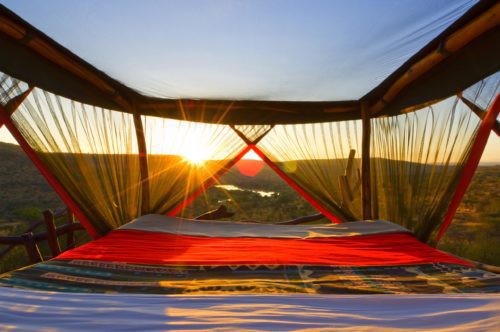
- Itinerary
Kenya’s Iconic Landscapes and Wildlife
Exploring forest, mountain, and savannah

- Itinerary
Classic Migration Safari, by Private Vehicle
Private vehicles in prime migration areas across Tanzania and Kenya
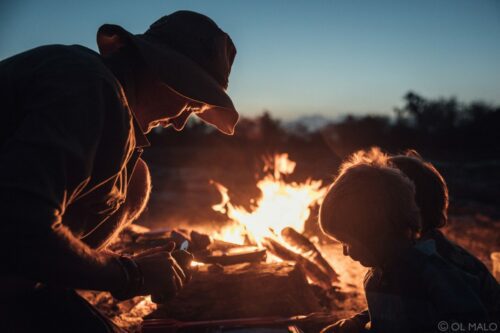
- Itinerary
Travel with Family: Kenya’s Private Bush Homes
Private properties and exclusive experiences to suit all generations
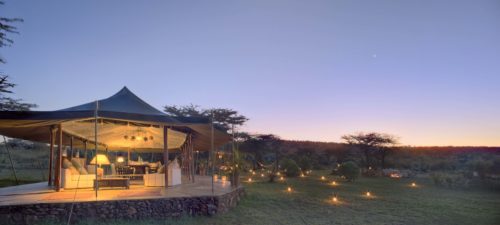
- Itinerary
Kenya: Barefoot Luxury & Adventure
Iconic safari experiences and authentic accommodation

- Itinerary
Kenya: Culture & Adventure Across the Plains
Get out of your vehicle and explore on foot
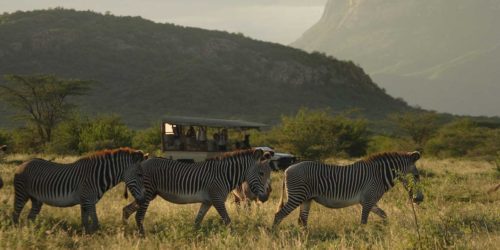
- Itinerary
9-Day Fly-in Kenya Safari
Incredible Game, Conservation, and Community Upliftment
Our favorite luxury safari camps & lodges in Kenya
Booking a luxury safari in Kenya
A luxury Kenyan safari requires diligent planning. We consider weather, timing, animal movements (if the Great Migration is a priority) and the availability of the best safari camps—some book up well in advance. Extraordinary Journeys’ Africa safari specialists will happily help you parse out which regions and parks in Kenya will align with your unique interests.
 Brigid Finley
Brigid Finley

